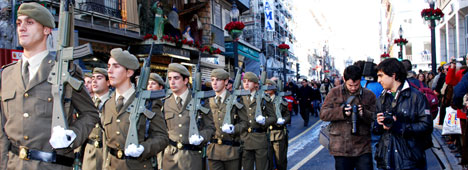Endangered birds stop record cable car as UNESCO backs Junta snub
THE proposed cable car between Granada and the Sierra Nevada mountain range has been indefinitely shelved.
Studies by the environment and public works departments of the Junta de Andalucía have refused to give the project the support it needed to go ahead, citing several major concerns.
And world heritage group UNESCO has backed the regional government in its findings.
Chief among the fears is the environmental damage the project would have done to the protected Sierra Nevada National Park.
A spokesman for the Andalucía office of UNESCO said: “The cable car is, environmentally speaking, unviable. It would have an enormous impact on the natural park with grave effects on its wildlife.”
Home to a quarter of Spain’s native fauna and flora, 150,000 square metres of park land would have been invaded during construction of the project, according to the studies.
Furthermore, 78,000 m2 of the Sierra Nevada would have been permanently lost once the cable car was built.
Both the heritage group and the regional government also had major reservations on the impact on the park’s birdlife. The concrete supports and high-voltage cables along the 19-kilometre trajectory would have posed a serious threat to endangered species such as the Imperial eagle and peregrine falcon.
EU plans to reintroduce the Bearded vulture (Gypaetus barbatus) – which has been extinct from the Sierra Nevada since the 1980s – would have been threatened as electric cables have helped decimate the birds’ numbers in northern Spain.
UNESCO is now calling for “sustainable and sensible” projects for the Sierra Nevada – which could have lost its UN Biosphere Reserve status had the cable car gone ahead.
“This mountain range is a model of conciliation between conservation and development. Economic and public bodies should work together to promote projects that respect the national park,” the spokesman added.
It is not yet known what future projects are in store for the Sierra Nevada. Recently, climate change studies and the conservation of footpaths have been undertaken in the mountain range.
In ruling against its construction, the public works department of the Junta claimed the cable car unviable.
The department’s study rubbished claims the cable car would reduce the amount of traffic using the road between Granada and the ski resort.
However, the consortium of private developers that was going to bankroll the 150-million-euro deal has slammed the Junta’s decision.
Carlos López, head of Teleferico SA, called the Junta’s decision “shameful electioneering” ahead of regional elections in March.
This, however, is seen by some as a weak argument by the promoters as recent opinion polls showed that 90 per cent of those questioned in Granada were in favour of the cable car.
The city’s council and chamber of commerce also backed the multi-million-euro project, with both bodies claiming the cable car would have financially benefited the city.
Key points
No alternative
Technical reports conclude the cable car would not be a viable transport alternative to the ski station. Junta believes there would only be a 6 per cent reduction in vehicles using the road.
Damage to fauna and flora
The regional government found the cable car would invade the habitat of 134 species of animals as well as seriously threatening the nesting areas of 90 birds, among them the endangered imperial eagle. The project would also threaten the reintroduction of the Bearded Vulture – Europe’s largest bird of prey.
There were also major fears zones of important flora would be irreversibly altered.
The natural park is home to 25 per cent of Spain’s native fauna and flora.
Invasion of protected land
During its construction, the cable car would have invaded 150,000 square metres of land protected by both regional and central governments as well as the European Union and United Nations.
Once built, the studies conclude 77,600 square metres of national park land would be lost forever.
Visual impact
The cable car trajectory would have been seen from all the major tourist attractions of Granada, spoiling views from the Alhambra palace.
Not in public interest
The report flat refuses the developer’s argument that the cable car serves public interests.


